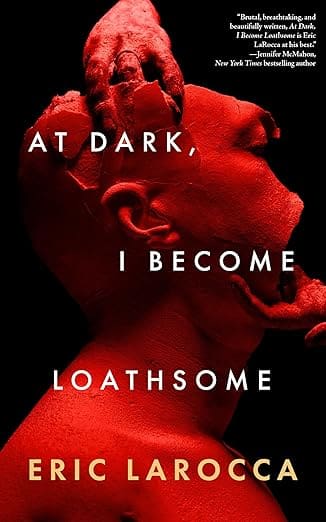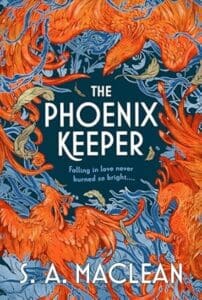
Synopsis:
“If you’re reading this, you’ve likely thought that the world would be a better place without you.”
A single line of text, glowing in the darkness of the internet. Written by Ashley Lutin, who has often thought the same–and worse–in the years since his wife died and his young son disappeared. But the peace of the grave is not for him–it’s for those he can help. Ashley has constructed a peculiar ritual for those whose desire to die is at war with their yearning to live a better life.
Struggling to overcome his own endless grief, one night Ashley finds connection with Jinx–a potential candidate for Ashley’s next ritual–who spins a tale both revolting and fascinating. Thus begins a relationship that traps the two men in an ever-tightening spiral of painful revelations, where long-hidden secrets are dragged, kicking and screaming, into the light.
Only through pain can we find healing. Only through death can we find new life.
Review:
Uneasy, unsettling and unsavoury are just three words that sprung to mind whilst reading the repulsive gem, Larocca’s latest, “At Dark I Become Loathsome.” If you were to combine the lyrical prose of Elle Nash, the complex, grief-laden plots conjured by Clay McLeod Chapman, and the transgressive, erotic horror that is truly unique to Larocca, you may well get something a little like this. Triggering and taboo in every sense of the words, for me this transcended the grisliness of their horror sensation “Things have gotten worse since we last spoke,” as well as the impact and heartbreak I felt whilst reading his short story “Prickle.” I am grateful for every ARC I receive, but Blackstone Publishing were kind enough to send me my copy all the way from the states! If you’ve ever enjoyed any of Eric’s work, or are looking for a particularly depraved entry point, it’s essential you snag this one on January 28th. “At Dark I Become Loathsome,” is also releasing from Titan Books in the UK, on the same date.
At dark, Ashley becomes loathsome. Having lost his wife Pema to cancer, and with his now 10 year old son Bailey having been missing for over a year, our narrator isn’t exactly filled with self-appreciation during the day, but when night falls, things get weird. Ashley has invented a bizarre ritual, designed to make his suicidal “clients,” learn to value and appreciate life, an act that is far more “out-there,” than any self-help book or anti-depressant on the market. Ashley offers the desperate souls who come to him the chance to be rebirthed- to glimpse death, and return with a much-improved outlook on life. At least that’s how the ritual should go. One potential client however, with his morbid yet fascinating stories, and later, shocking and heart-breaking revelations, quickly sends everything spiralling out of control.
Grief horror is big right now, and I’d argue that our bookshelves are all the better for it. Here, Larocca explores grief in a plethora of ways- in relation to guilt, shame, identity, and (à la Emily Dickinson) indulgence in it. Throughout the novel, Ashley is overwhelmed with the guilt of losing his son, losing his wife, perhaps even ashamed at the fact that he is here and they are not. This grief manifests itself in a multitude of ways beyond depression. A corrosive force that seems to gnaw away any sense of self, Ashley stops painting, drastically changes his appearance, adding piercing after piercing to his face, and of course begins performing these rituals. It seems that the Ashley of 5 years prior died with his wife, his own identity lost to the grief he feels. That being said, he doesn’t seem to make much of an effort in terms of healing, recovering, and moving on. Of course we all cope with grief differently, but Ashley does this unhealthily, allowing himself to revel in his misery, loneliness and self-loathing. The strange and harmful habits he adopts are simply an extension of his refusal to heal- his sorrow is palpable, but more than that, it’s performative, ritualistic and self-flagellating in the most grotesque and destructive of ways. When we meet Ashley, we can’t help but find him to be repulsive, yet despite how we view him and his actions, we also can’t help but see the twisted logic in the decisions he makes, striving only for salvation, and the return of his son Bailey.
The phrase “A feel-bad read,” is one that I use a lot, but only because it applies to so many of the books I pick up (I assure you, I am okay). “At Dark I Become Loathsome,” is one cohesive descent into despair, but feels like 5 “feel-bad reads,” rolled into one bleak, existential package. The misfortunes and agonies relayed to Ashley by his clients, both online and in person, may be peripheral to the central plot, but serve as emotional shrapnel, deepening the gaping wound left by the main storyline, and embedding themselves in my mind for the foreseeable (particularly the pages following Keane and Dubois). Closer in structure to “Brat,” by Gabriel Smith than it is to “Haunted,” by Chuck Palahniuk, but just as depraved as both, fans of Larocca’s shorter fiction, are sure to enjoy these bonus calamities, that elevate the novel from an examination of human suffering, to a whole anthology of it.
A twisted, and immersive plunge into the depths of despair, Larocca’s inhuman and inhumane ability to pair visceral horror and emotional devastation, as casually as one may pair a merlot with a Gruyère, simply solidifies them as a horror legend in my eyes. Whilst like, with all of Larocca’s work, and indeed all fiction really, this may not be for everyone, Eric’s rich and indulgent prose, and complete disregard for my feelings, works for me. Provocative, raw, and deeply uncomfortable, this is a novel for those looking to be challenged and disturbed.









Leave a Reply